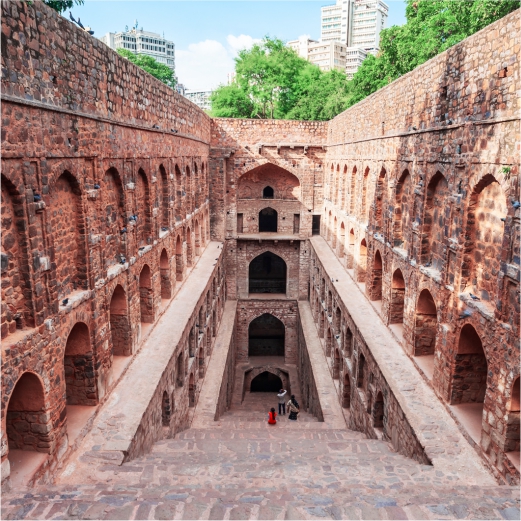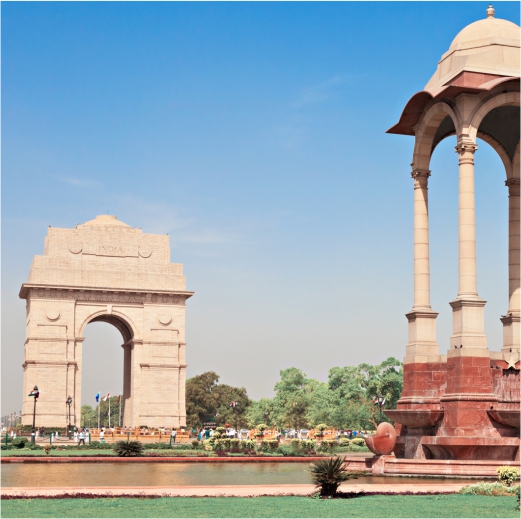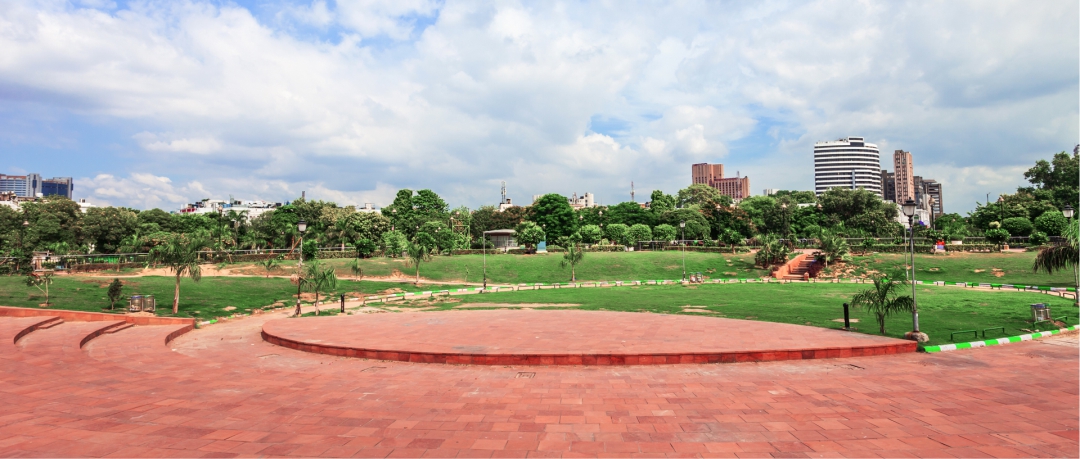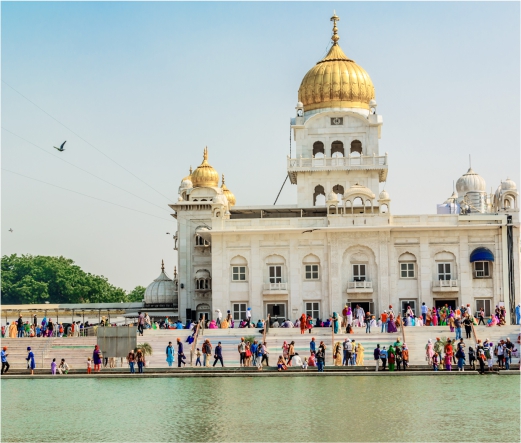Jantar Mantar, New Delhi
Been there recently?
The astronomical observatory, Jantar Mantar, is one of the most precise pre-modern observatories in the world and attests to eighteenth-century efforts to improve understanding of planetary and other cosmic movements. It is believed to have been constructed by the enlightened ruler Sawai Jai Singh II in 1729. “Jantar Mantar” means “instruments for measuring the harmony of the heavens.” It is made up of 13 architectural astronomy instruments that were used to foretell the movements and phases of the sun, moon, and planets. To obtain a precise understanding of the celestial bodies, astronomical tables and charts were created. Attractions at Jantar Mantar include the Misra Yantra, Samrat Yantra, and Jayaprakash Yantra. It is one of the five astronomical observatories the king constructed in Northern India. Architects, artists, and art historians from all over the world have taken an interest in it due to the striking geometric form combinations. It was created for bare-eye observation of astronomical positions. It follows the Ptolemaic positional astronomy tradition, which was prevalent in many ancient civilizations.

Nearby Places to See
Agrasen Ki Baoli
Agrasen-ki-baoli, a charming and tranquil location amidst the commotion of Delhi, offers a glimpse into the past of the city’s capital. It is a historical step well that is 60 m long and 15 m wide. Its historical significance, intricate design, and serene atmosphere have made the monument popular with filmmakers as well. Films like Sultan and PK have used the monument as a backdrop. The baoli (step well) has three levels, 108 steps, and arched niches on either side. Today, the Archaeological Survey of India (ASI) has designated it a protected monument.
Agrasen-ki-baoli, a charming and tranquil location amidst the commotion of Delhi, offers a glimpse into the past of the city’s capital. It is a historical step well that is 60 m long and 15 m wide. Its historical significance, intricate design, and serene atmosphere have made the monument popular with filmmakers as well. Films like Sultan and PK have used the monument as a backdrop. The baoli (step well) has three levels, 108 steps, and arched niches on either side. Today, the Archaeological Survey of India (ASI) has designated it a protected monument.


India Gate
India Gate, a magnificent archway that honours the valiant soldiers who gave their lives to protect the nation, is a well-known landmark in Delhi. This 42-metre-high gate, which was constructed of sandstone, was the first of its kind in the national capital. In addition to the names of the 90,000 Indian Army soldiers who died in World War I, 13,516 soldiers who died in the Northwestern Frontier of the Afghan War in 1919 are also memorialised on the walls of the gateway. Red Bharatpur stones make up the monument’s base, and the Arc-de-Triomphe in France is a structural inspiration for India Gate.
India Gate, a magnificent archway that honours the valiant soldiers who gave their lives to protect the nation, is a well-known landmark in Delhi. This 42-metre-high gate, which was constructed of sandstone, was the first of its kind in the national capital. In addition to the names of the 90,000 Indian Army soldiers who died in World War I, 13,516 soldiers who died in the Northwestern Frontier of the Afghan War in 1919 are also memorialised on the walls of the gateway. Red Bharatpur stones make up the monument’s base, and the Arc-de-Triomphe in France is a structural inspiration for India Gate.
Connaught Place
Connaught Place, in the centre of Delhi, is a historic district with buildings designed in the Georgian architectural style. The market, which is the centre of most activities in Delhi, is lined with a wide variety of restaurants, upscale shops, parlours, theatres, and book stores. Connaught Place used to be a cinema centre before being overrun by stalls and shops. At various theatres in the 1920s, Russian ballets, Urdu plays, and silent films were presented. Catching a movie in one of the large movie theatres is a magical experience. The British built the impressive Connaught Place building in ivory white in 1929 to relocate to Lutyens Delhi. It is one of the most expensive places to work in the world and offers visitors a rare fusion of diversity.
Connaught Place, in the centre of Delhi, is a historic district with buildings designed in the Georgian architectural style. The market, which is the centre of most activities in Delhi, is lined with a wide variety of restaurants, upscale shops, parlours, theatres, and book stores. Connaught Place used to be a cinema centre before being overrun by stalls and shops. At various theatres in the 1920s, Russian ballets, Urdu plays, and silent films were presented. Catching a movie in one of the large movie theatres is a magical experience. The British built the impressive Connaught Place building in ivory white in 1929 to relocate to Lutyens Delhi. It is one of the most expensive places to work in the world and offers visitors a rare fusion of diversity.


Bangla Sahib Gurudwara
Gurudwara Bangla Sahib, a peaceful haven amidst the bustling marketplace, is Connaught Place’s most well-known landmark. With its tall golden dome glistening in the sunlight, you can see it from a mile away. A sense of peace takes over upon entering the premises. You can take a stroll around the peaceful pond in the Gurudwara after offering respects at the sanctum. A vast expanse of immaculate white decorated with intricate carvings, is a must-see location.
Gurudwara Bangla Sahib, a peaceful haven amidst the bustling marketplace, is Connaught Place’s most well-known landmark. With its tall golden dome glistening in the sunlight, you can see it from a mile away. A sense of peace takes over upon entering the premises. You can take a stroll around the peaceful pond in the Gurudwara after offering respects at the sanctum. A vast expanse of immaculate white decorated with intricate carvings, is a must-see location.

-
Destination



